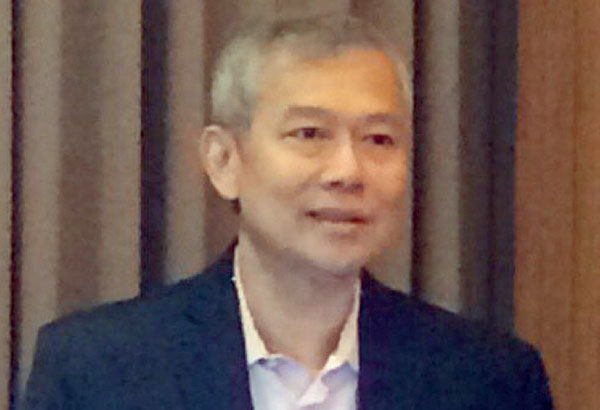How Autodesk is helping train students for IT, design jobs of the future

MANILA, Philippines - An innovative chair created by 3D design, engineering and entertainment software company Autodesk has landed third place in Wired’s Most Innovative Objects of 2016. And for good reason: It was designed completely by algorithms.
The Elbo Chair, created by Arthur Harsuvanakit and Brittany Presten of Autodesk’s generative design lab, was described by Wired in an article as a seat “18 inches off the floor, and capable of supporting 300 pounds.” The designers reportedly fed the software a digital, 3D model of a chair inspired by Hans Wegner’s iconic Round Chair and the Lambda Chair from the design studio Berkeley Mills. Then, the computer took care of the rest.
Teddy Tiu, Autodesk Philippines country manager, explains that typically, a designer would decide how a product would look, what it would be made of, and how it would be constructed.
“Today, with generative design, it (the software) now handles the components of the design process. Basically, the designer will just give the metrics of how they want the design to come out and through the cloud’s infinite computing availability, the software can generate up to thousands of designs for a single product based on the criteria that a designer determines such as the weight, strength, size and material,” he says.
The good news is that generative design will now be available in Autodesk Fusion 360, a 3D CAD, CAM, and CAE tool, which connects the entire product development process in a single cloud-based platform. The adoption of Fusion 360 will also start with the student community.
Two years back, Autodesk Philippines announced that the Autodesk software will be available free of charge to students, professors, and schools. The offer still stands today and the design firm has a growing army of student ambassadors, all enthusiastic users of Autodesk software. Across the country, forums, training, and conferences are also happening regularly for teach-ins on the use of the software conducted by students themselves. Tiu has been kept busy gracing these events.
“We try to empower students to make use of the software to contribute to the industry,” he says. The fact is, even for products designed by algorithms like the Elbo Chair, there is still human input required. In the article published on Wired, Harsuvanakit was quoted as saying that the Elbo is a collaboration between human and machine.

Autodesk Philippines country manager Teddy Tiu (right photo) says the company has completely transitioned into a subscription-based business model.
This only means, the article adds, that the IT and design jobs of the future will be high-end, high-value and high-tech. By 2030, Autodesk is actually predicting five potential design and engineering jobs that will be in great demand, including what it calls a “generative designer.”
“As algorithmic design tools become more prevalent and advanced, the software will not replace designers but they will change how a designer works. So instead of coming out with a 3D model from scratch, the designer will allow these AI-based generative design software to create a solution so that they will refine into the ultimate outcome,” Tiu explains.
Another is that of Augmented Reality (AR) and Virtual Reality (VR) curator. Tiu says many AR and VR applications today are related to gaming and entertainment but unlike gaming and movie studios, organizations that are new to this space like architectural firms and manufacturing and even schools need skilled staff to create and curate AR and VR experiences.
Next up are sensor system integrators, which Autodesk projects to be very significant as intelligence is now being integrated into almost all products. “As more and more products get sensors, we need to ensure that all those internet-connected things talk together. The jobs of the SSI may be setting up sensors, networks in commercial buildings or integrating connected products in homes or even integrating sensors during product development,” he explains.
As robots are increasingly being used in practically all industries, there may be a need for robot trainers or humans who train robots to learn and do complex tasks such as high-risk tasks or very specific tasks in the automotive assembly line.
Then, there are also the incoming 3D specialists who need to supervise all 3D printing works in the manufacturing and construction industries.
“Think of what this specialization can do to provide jobs and opportunities for our people in the high-tech industries of the future,” says Tiu.
Currently, the Philippines is already one of the top countries in the world with monthly active users of Autodesk software. “We are also the source of human capital for design and engineering software worldwide,” he adds.
Tiu has great faith in Filipino students’ potential for design and engineering and is making an urgent call for users in the academe to use the free software for good.
For professional and enterprise users of the software, Tiu says there is a lot to look forward to in 2017. “Firstly, Autodesk has fully transitioned to a subscription-based business, and now offers the broadest portfolio of single-user, multi-user licenses under one-quarter, one-year or even multiple-year subscriptions.”
Secondly, Autodesk introduced Industry Collections, which simplifies 20 different suite configurations of next-generation design and engineering software into three simple solutions that are native to the cloud.
- Latest






























